The 911 emergency system is the first option most people have during an emergency situation.
Its ability to help the injured makes it the most important advent in these modern times. However, your location and the size of your municipality can work against you. In certain scenarios, help can be just a few minutes away.
Since we do not live in a perfect world, you might want to consider the possibility that help may come too late and you may have to figure out a way to mitigate the damage and risks before help arrives. When dealing with an open wound, one should always know how to stop the bleeding, before things take a turn for the worse.
Let’s just say you live in a rural area or you choose to explore the backcountry. In case of an accident, you may be looking at exponentially longer response times. Factor into the possibility that there isn’t cell phone coverage in your area and you are looking at a truly dangerous situation.
Even more, these are not isolated cases, and even law enforcement can experience delayed medical rescue. If police officers are involved in actions which create injured officers or civilians, they will be left without help until the area has been deemed safe to enter. In such cases, everyone involved in the incident are left to fend for themselves. No matter how much they wish to help, rescue teams are held back for their own safety.
Cases like the ones above have pushed over the years for training in self-care. A particular drill is the one regarding blood loss, more precisely, what you can do to stop the bleeding. The fundamentals are simple, and they should be learned by everyone.
First response
One of the most severe issues you will face when seriously injured is blood loss. Consider the fact an average adult has about 10 to 12 pints (5 liters) of blood in their body. If you ever donated blood, you probably know that you gave about one pint of it to save other lives. That quantity can be replaced in the body in one or two days.
During a severe injury, you may lose significantly more blood, and your body won’t be able to replace it. Once you lose 20 to 30 percent of your blood volume, your blood pressure drops. A loss of 40 percent (about 4 pints), will result in death. How fast you are losing blood depends on where the injury is located and its severity. An injury in a high-risk area of your body can make you bleed out in three to five minutes. Time is a critical factor when you have to stop the bleeding. When blood loss continues, you will become disoriented. Confusion and weakness set in and your ability to respond is greatly impaired. You have to act and act quickly!
Self-aid gear to stop the bleeding
I recommend that you keep a self-aid kit in your car, get home bag or your EDC. There are many companies that offer general first aid kits that can be easily carried in a pouch. Make sure you read the reviews and pick the vendors with years of experience in medical training and medical supplies distribution.
As said previously, the most important thing you have to do when dealing with an injury is to stop the bleeding. Pressure needs to be applied to the wound in order to slow and/or stop the bleeding. There are several ways this can be done. The most field-expedient method is to use any piece of cloth available and pack it on the wound. Once in place, you must apply pressure on top of the injury to stop blood loss.
If possible, you should elevate the injured area above the heart since this can also slow the loss of blood. One of the most effective tools, carried by many preppers, is the emergency bandage (also known as the Israeli bandage). This is a distinct bandage that can be applied with ease by one person. It covers the wound with a sterile bandage which includes a specific compression mechanism.
Get this lifesaving information about surviving when doctors, pharmacies and hospitals are shut down
If you decide to carry a self-aid kit, you shouldn’t forget to include hemostatic agents. This is a game changer when it comes to the self-care treatment of serious injuries. These agents usually come in the form of a treated gauze pad. All you have to do is pretty much remove the pad from the packaging and apply it to the wound to stop the bleeding. The chemical agents from the pad will react with blood creating a seal to enclose the wound. You will still need compression of the wound, but the fast acting and effectiveness of hemostatic agents is astonishing. To make things easier for your recovery, the agents can be easily cleared from the wound by medical professionals, allowing them to deal with the injury without complications.
When you prepare your first aid kit, I recommend buying the Celox brand. It is the most popular one and is available to military, law enforcement and civilians alike. I consider it a must for any serious first-aid kit.
Another important piece of self-care equipment that can save your life is the CAT (Combat Application Tourniquet). This is a small, lightweight, one-handed tourniquet that completely obstructs arterial blood flow in extremities.
The CAT uses a self-adhering band, a friction adaptor buckle to fit a wide range of extremities and a one-handed windlass system. The windlass uses a free-moving internal band to provide true circumferential pressure to an extremity. The windlass is then locked in place. This process requires only one hand to perform thanks to the windlass clip. The tourniquet can be self-applied and managed to minimize damage to surrounding tissue.
Similar to the CAT in both popularity and effectiveness, the RATS (Rapid Application Tourniquet System) is another viable option for your first-aid kit or EDC. It is an extremely easy to use system, and its simplicity allows the RATS to be used by anyone regardless of their background. The RATS is a 1.5-inch bungee with a metal cleat, and it slows or stops blood extremely well. It is affordable, lightweight and quick to use.
Additional items you should consider for your first aid kit include trauma shears to cut away clotting and rolled gauze to cover injured areas. If you need to treat others, consider also adding non-latex gloves.
Homemade solutions to stop the bleeding
As preppers, we have to train ourselves to think outside the box and find alternative solutions to most of our problems. Imagination and proper self-care knowledge will keep you alive until professional medical help is available. If you have to stop the bleeding when medical aid is late, there are some solutions that are available to all of us.
You’ve probably read about the method involving cayenne pepper powder to stop the bleeding. Right? I don’t want to burst your bubble, but you need to try it first and see if it’s the right method for you. While it’s true that it stops bleeding, it also causes stinging, and certain people won’t be able to stand such pain. Cayenne is anti-bacterial and anti-fungal, and it will desensitize the nerve receptors in the wound. If you don’t like the stinging sensation, you can just omit it and try something else.
Other homemade solutions useful for clotting a bleeding wound quickly include ice, tea bags, ground coffee powder, white vinegar, turmeric, and sugar. All these methods work to stop the bleeding, but I recommend trying something else.
How about making an astringent powder or gel to stop blood loss fast?
An astringent powder is an antiseptic substance used to stop bleeding, and you can easily make one at home. I carry a small jar with astringent mix in my backpack whenever I go hiking. Making your own is simple, inexpensive and the best part is that such powder contains only natural ingredients.
Here are the ingredients needed to make a natural astringent powder:
- Dried stinging nettle
- Dried yarrow
- Turmeric powder
- Dried comfrey root or leaf
- Cinnamon powder
- Bentonite clay
Instructions
Measure one tablespoon of each of the ingredients listed above. Use a coffee grinder to grind all the herbs into a fine powder. Add the clay to the ingredients and mix well. Once you’re done mixing, make sure you store the astringent powder in a sealed jar.
When dealing with an injury, just apply the powder and press lightly. It takes about one minute to stop the bleeding. For larger or deeper wounds, it make take a few tries.
If you want to make the astringent powder into a gel (for easier application), you can use raw honey or coconut oil. Raw honey can be used for any type of bleeding would, while coconut oil should be used only for light bleeding. Since coconut oil is greasy, it can repel blood in heavy bleeding and will make it harder to stop the bleeding.
Summarizing
Controlling blood loss becomes critical during an emergency situation and dealing with a bleeding wound is perhaps the most dangerous problem you will have to deal with. You need to take action and give yourself time until professional medical help arrives. Here are the crucial steps to take:
- Apply pressure – Hold pressure on the wound and use a sterile bandage if available. Once pressure was applied for an extended period, you can slowly release the pressure to check if the bleeding has stopped. An Israeli bandage is recommended to be used.
- Pressure bandage – If bleeding continues, that’s a clear sign you need to use a dedicated compression bandage. Pressure bandages, such as the Israeli bandage, makes it easier to cover the wound and maintain proper pressure.
- Clotting agents – If you notice continued bleeding after the initial check-up and if there hasn’t been any significant reduction in blood flow to the wound, you will need to use a homeostatic agent. Use a treated gauze or improvise one with a sterile bandage and a homemade astringent mixture.
- Using a tourniquet – Using a professional tourniquet such as the CAT or the RATS is highly recommended at this point. You can learn how to apply one during medical training under the guidance of experienced staff members, or you can watch YouTube videos made by professionals.
- Get help – All the above self-care steps can buy you some time, but they’re far from a final solution, especially when you are dealing with heavy bleeding. Seek professional medical aid as soon as possible. Doing so will help you prevent infection, scarring or even worse, amputation or death.
Conclusion
As preppers, we must recognize self-care as an essential skill. In the world we are currently living, it is fostered by a sense of pure reality. When the brown stuff hits the fan, survival may be entirely up to you and your own actions. The best thing you can do is to prepare. Get yourself a first-aid kit and learn how to use it. If the day comes and you find yourself injured, you need to have the knowledge and the means to stop a bleeding wound.


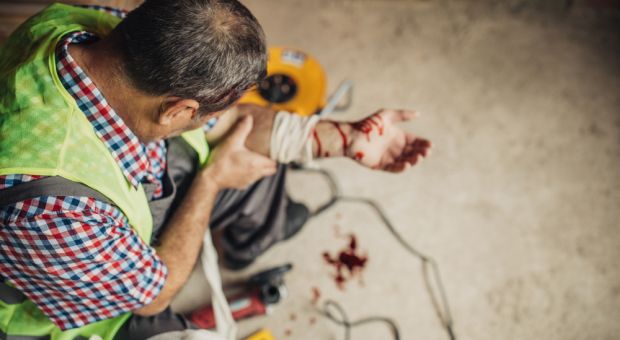



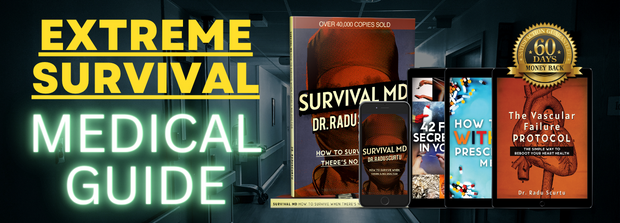
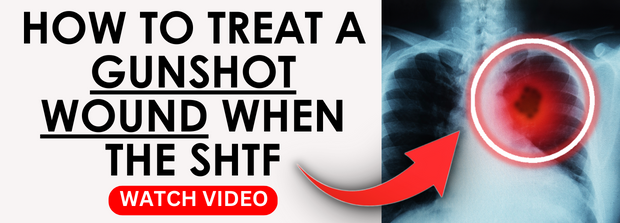
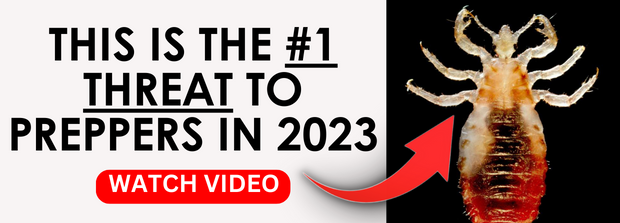
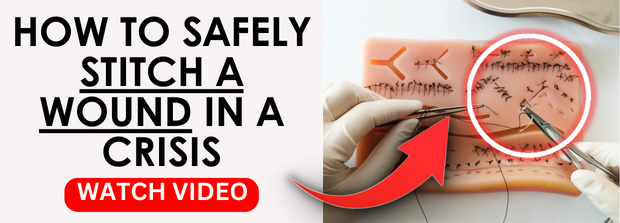
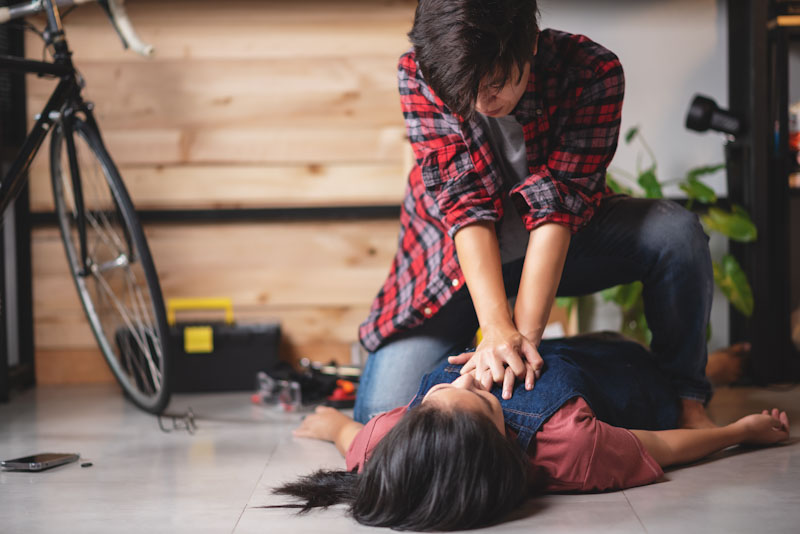
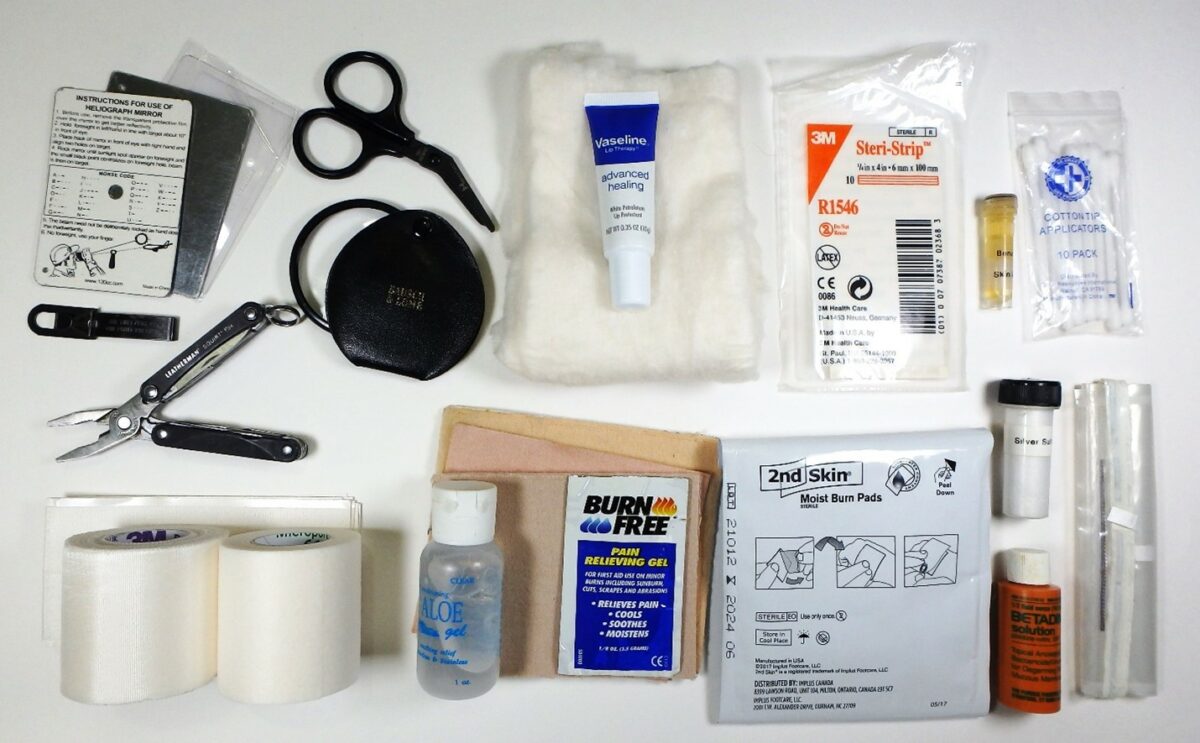
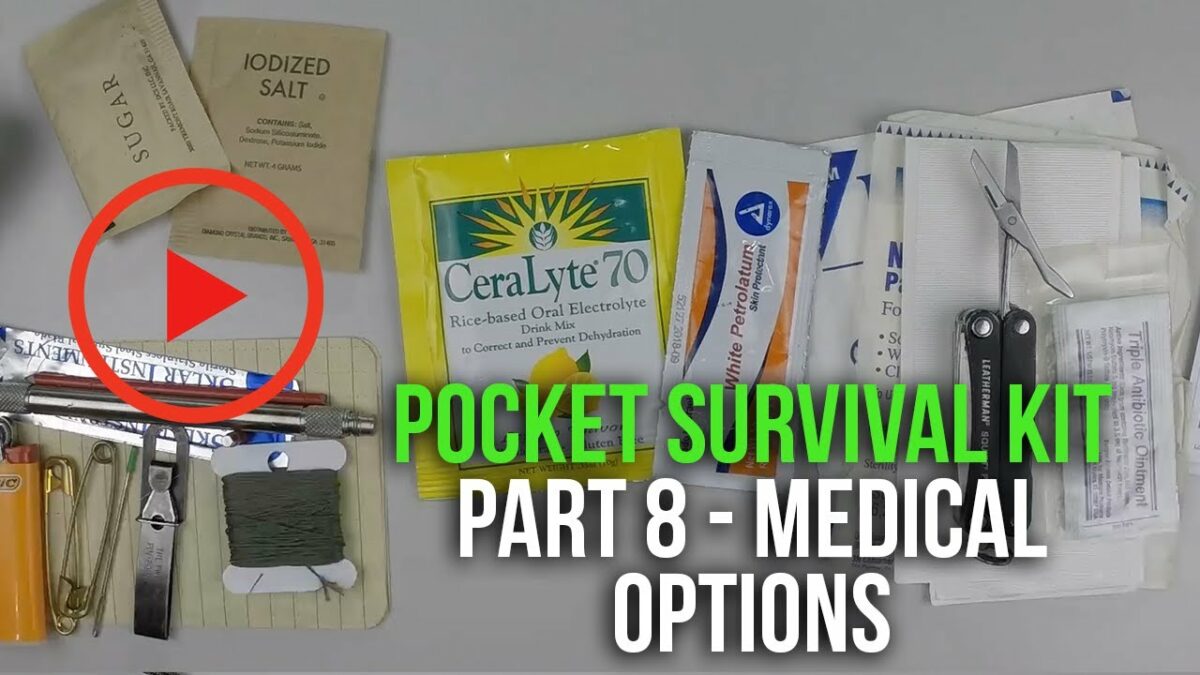

SkiptheBS | April 25, 2019
|
My favorite clotting agent is green persimmon. It is necessary to gather them before they begin to make fructose, usually in June or July.
They can be cut into slices and frozen between sheets of waxed paper or plastic wrap.
I intend to try drying some this year and see if they will retain their styptic properties when desiccated and ground. The fresh and frozen ones work almost instantly.
Thank the Cherokees for this one.
Shane Westerbur | August 29, 2019
|
I cannot use coconut oil because I am allergic. I prefer the cayenne pepper because it does numb the wound. Yes it burns at first but it also disinfects and I usually have some handy.
Manuka | August 29, 2019
|
For the homemade astringent, should dried stinging needed actually be dried stinging nettle?
Dave | September 2, 2019
|
You are right Manuka they need to do more Research before printing False information
Mark | May 26, 2021
|
Dave. It’s called a TYPO…not False information…geez!
Hank | October 25, 2019
|
He left out a very effective, cheep, and readily available item. BLACK PEPPER my Grandma’s home remedy.
Sandy Highway patrol Nova Scotia | October 25, 2019
|
Have used cayenne pepper alone it works. Also can make paste of NATURAL honey and cayenne pepper. Need something to pull edges of wound together. Once used old fashioned pen as a stint in artery in leg of person trapped in car wreck. For smaller cuts use a plantain leaf. Chew some to make paste then use one as bandage.
Russ | February 9, 2020
|
Corn starch has been an extremely effective clotting agent. It must be clean, but it absorbs moisture and seals off bleeding incredibly quickly.
David | February 10, 2020
|
Great grandmother, used raw honey and pine tree
Pitch ( sap that ozes out of tree when injured)
For 65 years i have used cheap 3/4 ” plastic electrical tape cuts . Stops bleeding,keeps cuts clean, helps stop soreness and is cheap at harbor freight. One other thing in all my bags is a small magnifying glass, also can start fires quickly.
Hank | April 10, 2020
|
I use black pepper. Slows the bleeding and doesn’t hurt.
Frank | August 8, 2020
|
You list Yarrow, but don’t say if flower, leaf or stem. Does it matter?
CLEBER VINICIUS RIBEIRO HOMEM | August 9, 2020
|
Super glue can close the wound, so it helps stop the bleeding!
Richard Herron | November 8, 2020
|
Dried Stinging “Needed” – wtf is ‘Needed’, you need to edit your articles better especially when including stuff like this.
Bill In Idaho | November 8, 2020
|
“Quick-Clot” and “Super Glue” – Have it or wish you did. Also 6″ wide strips of Heavy Polyester fabric – NO Cotton ! Heavy string or Boot Laces. Thats it.
Bill In Idaho | November 8, 2020
|
I forgot to mention – Do Not Use Tape – it will not hold for long.
Zippy | November 8, 2020
|
Bill’s right…I’d be too tempted to eat the honey and pepper on my eggs. Don’t forget the CAT
Kipp | November 9, 2020
|
Take a First Aid class. Many are available, some online.
Joe | November 9, 2020
|
I use a mix of 1/3 aluminum sulfate (alum), 1/3 kaolin clay (the stuff used in hemostatic dressings and kaopectate) and 1/3 cayenne pepper (which reduces blood pressure in the area). Aluminum sulfate is not only sued to thicken sauces but is also used to floc suspended particles in potable water processing. It causes solids to stick together and therefore speeds up clotting. Compressed aluminum sulfate was used in styptic pencils that were used to stop bleed from shaving cuts. I find aluminum sulfate and kaolin clay on eBay. If you do not like the burn, then leave out the cayenne pepper.
It also have the advantage that it is water soluble and can be flushed from a wound before stitching. Synethic hemostatic agents must be cut from the wound before stitches.
Jeanne Ganimian | January 13, 2021
|
I have used stevia powder for years and it works fast – no pain – washes off easily.
rm p | November 10, 2021
|
Wow thanks! Always have plenty of Stevia powder on hand, and its a blessing to know this has another use!
As a child, I suffered immense bleeding from my arms when,
inadvertently, tried to forced open what was a locked window – not a “stuck” one!
Fortuitously, my 80 year old WWI surviving “Oma” caught sight of what happened – and -IMMEDIATELY shuttled me towards running cold water in the bathroom sink
to rinse off glass shards; then
she quickly applied large clean white cloths as tourniquets for each arm. She commanded that i “hold arms up high” – and even demonstrated with her own arms – so I just copied her!
I was so busy following her directions
that I had no time to be terrified. The bleeding did stop and there was no scarring or need for a trip to the E.R.
Could I today apply such tourniquets so quickly & skillfully? No….really…no.
But if anyone has this first aid skill –
You could certainly make a huge difference to someone!
grammy em | November 10, 2021
|
whatever you use, remember: when you get to the emergency room or the bleeding stops and you are ready to clean and dress that wound, whatever you put on it will have to come off–and that is likely to start the bleeding again. use that info to help decide what you want to do to stop the bleeding.
Sheree Lally | August 3, 2023
|
Have had two falls in the last year with damage and excessive bleeding to the same arm at different levels. The last one was the worst as the skin was totally gone and the bleeding didn’t stop for days. The first one eventually healed with bandaging and antibiotic ointment and left a long white scar. The second one that was much worse with a gaping wound, I used Silver Gel. The bleeding lasted for days because there was no skin to mesh together, but the scar that I expected never materialized. Today if you look at that arm, you would see the long white scar from he antiobiotic-treated wound and NOTHING at all from the worst wound I’ve ever had using the Silver Gel. You can buy that cheap on Amazon. Hope that helps someone.